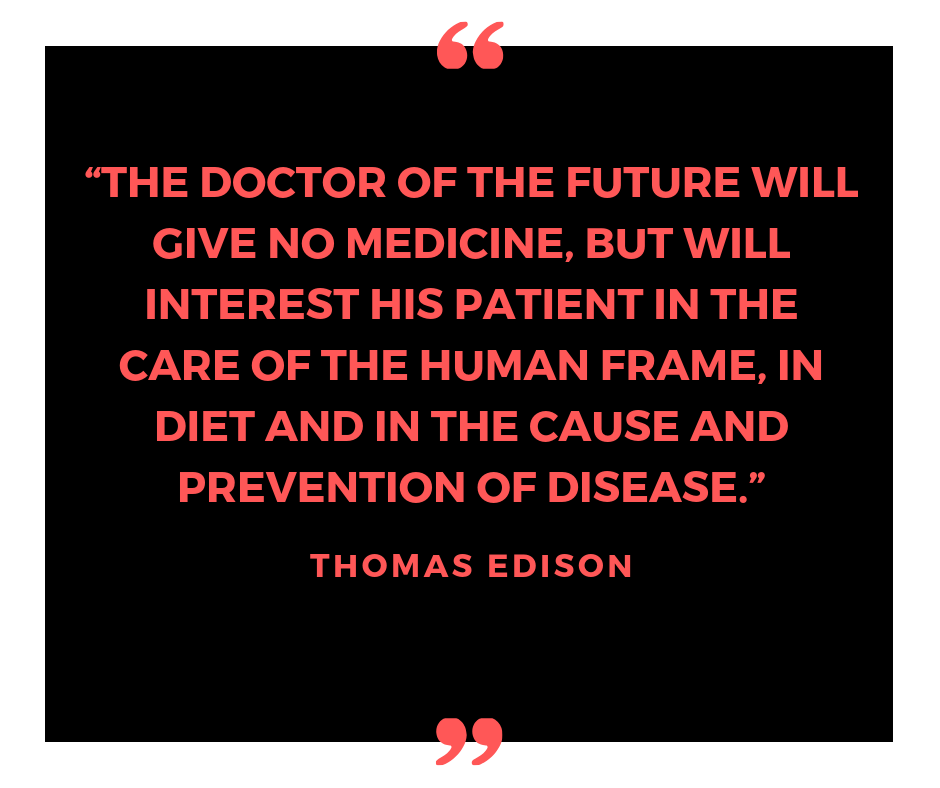October is National Chiropractic Health Month! In honor of this month, I figured I would write a blog focusing on Chiropractic and its many benefits!
What is Chiropractic?
Chiropractic means “To be done by hand.”
Chiropractic is a healthcare profession that focuses on disorders that affect the Musculoskeletal (muscle, bones, joints) and Nervous system. Chiropractors recognize that the body has the unique ability to heal itself. By using spinal manipulations (adjustments) they help to restore function and support the nervous system to allow the body to perform optimally.
Chiropractors are licensed professionals that focus on preventative care without the use of drugs or surgery. Along with spinal manipulations, care can include soft tissue therapy (muscle, ligaments, tendons), lifestyle recommendations, therapeutic exercise and nutritional advice. By addressing the whole body rather than just the area of pain or symptoms presented it helps to increase the overall health and well-being of the patient.
For example, if a patient presents with frequent headaches just telling them to take an over-the-counter (OTC) pain reliever is only addressing the symptom which means the pain will return. A Chiropractor will assess to see what is the root cause of the pain which could be:
- Misalignment of the cervical spine (bones of the neck)
- Muscle tension
- Stress
- Something in the diet (processed foods, alcohol, etc.)
- Dehydration
- Poor Posture
- Skipping Meals
- Lack of Sleep
As you can see, taking a pill is not addressing any of the above and your headaches will continue to return until the root cause is identified and treated.

How Does Chiropractic Work?
Chiropractic care is safe and natural. Regular care helps to relieve stress on the body leading to overall health and well-being. Chiropractic works by eliminating anything that may be interfering with allowing the body to naturally heal itself. Chiropractors use a range of different therapies to help restore joint function, increase flexibility and relieve pain and stiffness. Treatment can include:
- Adjustments: Fixes any misalignments in the joints of the spine and or extremities which helps to restore normal function and reduce pain.
- Spinal Traction: Reduces pressure on the disc of the spine and nerve roots exiting the spine helping to restore normal function and reduce pain.
- Manual Soft Tissue Therapy: Hands-on therapy that helps to improve function of muscles, ligaments and tendons.
- Ultrasound Therapy: Deep heat that helps to increase blood flow, decrease muscle spasms and reduce pain and stiffness.
- Therapeutic Exercise and Stretching: Exercise helps to strengthen muscles, prevent deterioration, promote stability and increase range of motion. Stretching prevents formation of scar tissue, increases flexibility, mobility and prevention of new injuries.
- Nutritional Counseling: Maintenance of a well-balanced diet to help prevent nutritional deficiencies and chronic diseases related to diet.
- Lifestyle Modifications: Educate patients on ways to effectively manage stress, improve quality of sleep, increase physical activity and stop smoking.
What Conditions Do Chiropractors Treat?
Although most patients seek care for back pain, Chiropractic is not just about back pain! Doctors of Chiropractic treat a range of conditions including but not limited to:
- Carpal Tunnel
- Headaches and Migraines
- Shoulder, Neck and Hip Pain
- Rib Pain
- Whiplash
- Sciatica
Chiropractors are highly skilled, trained professionals who have the knowledge, skills and abilities to also recognize that there are conditions which require more invasive treatment protocols. Once a patient is assessed, if referral to another health practitioner is warranted then it is the responsibility of the doctor to refer them to the appropriate medical professional.
What To Expect When You See a Chiropractor?
Your first visit to the Chiropractor is similar to a visit with any other practitioner. A typical first visit will include:
- Interview with the doctor so they can get to know your detailed health history and chief complaint.
- Physical Exam including Othro/Neuro testing
- Lab Testing (if warranted)
- X-Rays (if warranted)
- Working Diagnosis
Once a plan is developed, treatment will commence and progress is monitored to assess if it is effective. Since care is hands-on it requires the patient to be present in the office which is why you may have regular weekly visits to the doctor. Natural healing takes time and although some patients experience immediate relief after one treatment, others may need several visits to help aide the body in restoring proper function and healing.
The sound you hear after receiving certain adjustments is no different than the sound you hear when you pop your fingers. The noise is caused by the change of pressure within the joint, which results in gas bubbles being released. Some patients may experience some mild discomfort after an adjustment but this is no different than the pain you may experience after a good workout.
Does Insurance Cover Chiropractic Care?
Chiropractic care is included in most health insurance plans, including major medical plans, workers’ compensation, Medicare, some Medicaid plans, and Blue Cross Blue Shield plans for federal employees, among others. Chiropractic care is also available to active-duty members of the armed forces at more than 60 military bases and is available to veterans at more than 60 major veterans medical facilities. To verify what benefits your individual health insurance plan has, it is important to contact your insurance provider.
If you are looking for a more holistic form of healthcare to help your body achieve OPTIMAL HEALTH then Chiropractic is the perfect solution for you!

Find Health in Every Day!
Dr. Lindsay
#ChiropracticHealthMonth
#strength
#stabilty
#success
#stepstostrength


